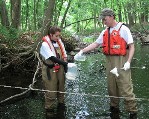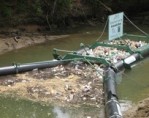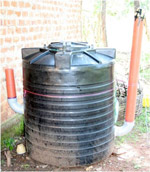More than 20 citizens who live near the Tar Creek Superfund Site in Northeast Oklahoma have received training that will allow them to work to help clean up the site.
Now everyone will know that offshore drilling is the No. 2 cause of oil spills, says John Morrissey.
Recycling business allegedly poured industrial cleaner into storm drain leading to the Fox River, resulting in a fish kill.

Scientists collected outflow samples periodically from 2004 to 2009 from three New York wastewater treatment plants, two of which receive more than 20 percent of their wastewater from pharmaceutical manufacturing facilities.
The International Water Association will award the global grand prize in Montreal in September.
These projects will restore habitats, rehabilitate landfills, clean and store stormwater, lower the urban heat island effect, create outdoor educational opportunities at schools and reconnect neighborhoods to parks and public transportation.
The Smart Growth Leadership Institute will work with the state to align its land use and water protection programs.
The technology turns a maintenance problem at the Nansemond plant into a commercially viable fertilizer product with no additional cost to the Hampton Roads Sanitation District.

City takes out ARRA-funded loan to help stop trash from polluting the Satilla River.
The City Council and voters appear to support a restoration project that would dedicate half of 1,436 acres for recreation and the other half for a walkable, transit-oriented community.
Washington association recognizes the airline with a Recycler of the Year award.
Yale University scientists say that wastewater treatment plants may not be able to remove all quaternary amines discharged with household detergents and shampoos, allowing the formation of nitrosamines, a suspected cancer-causing contaminant.
In recent testing at the Army’s Aberdeen Proving Ground, INL researchers have been using ultraviolet-wavelength lasers to scrub surfaces clean of sulfur mustard gas and VX, a nerve agent.

A University of Virginia doctoral candidate and an engineer use capacity factor analysis to determine the best way to implement a biogas cooking fuel system in Namawanga, Kenya.
According to the agency, many facilities have already begun implementing recommendations to improve safety of their impoundments.
The kiosk system can capture, track, and recycle mobile devices.
Company says it doesn't have enough information on alternative dispersants nor are sufficient quantities currently available.

Study suggests invasive species may be to blame as increase appears to have occurred in the last 17 years.
After four years of public input, Kansas City has a plan that is expected to eliminate unauthorized sewage overflows.